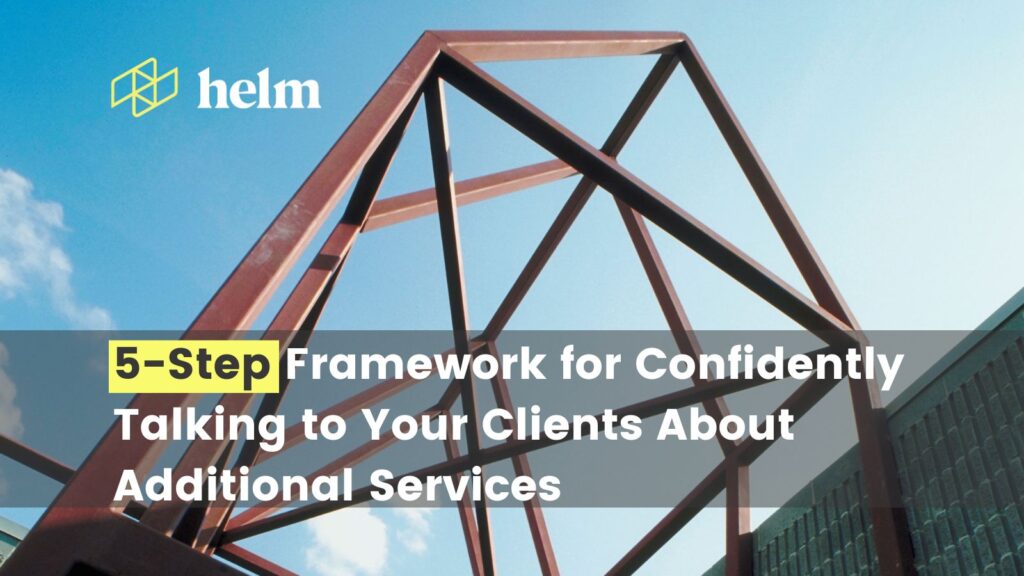Easy! Just imagine they are only wearing underwear and you’re off to races, right!?!
Hmm maybe for some, but for the rest of us confidence means more than bravado, a fancy suit and slick hair.
You’ve got incredible technical skills.
But a roadblock that we see often in our Cash Flow Advisory Course, and from talking with peers is confidence. If you’re reading this, like those in the course, you likely already have many of the financial and technical skills to begin adding additional services, but are looking for some guidance on how to go about it
So, how should you talk with your clients about additional ways you can impact their business?
Below we’ve laid out 5 core pieces of a framework on how you can prepare to confidently discuss with your clients:
- Remember that you are qualified
- Remember that you know your client inside and out
- Focus your idea and own it
- Stop listening to yourself
- Tune your presentation
You are Qualified
Don’t worry we aren’t going to turn this into Oprah’s newest self help book. But, It can be easy to get in our heads and it’s good to remember that regardless of your experience, education or skills you are qualified.
You may have a designation like a CPA, CPB or CDB, or training like a university degree, college certificate, an apprenticeship or something else!
While those are all great, what really matters is you were hired by your client for your expertise – no one hires for below average service. This means your client has already qualified YOU to talk to them. They are open to any new ideas, knowledge or information you can provide that will help them.
In fact, just by bringing something to the table you will be doing something that most other professionals probably haven’t done in the past because they lacked confidence or were simply too busy.
The point here is that we often see people asking the question:
“How do I talk to my clients about this…”
when what they are really asking is:
“Should I be doing this…?”
They are asking this because they might think they are lacking certain experience, a certain title or a certain certification.
Qualifications do matter, but your ideas and advice likely come from your experience and expertise, so the only thing really holding us back is our own apprehension.
Remember that you know your client inside and out
You already have a lot of valuable insights about your client’s business.
If you do their bookkeeping, you know their processes, you know how well they record their data and you know where they spend their money.
If you do their accounting and taxes, you know their financial situation, you know their past performance and you know which areas of their business are strongest.
You also know how emotionally tied to your clients are to their finances. You’ve heard them talk about their stresses and what keeps them up at night.
Regardless of your certifications or experience, you have experience with your client, and you likely already have several ideas of how you help improve their business.
STOP! Think of a client of yours. Can you think of 5 things you could do to improve things for that client?
BUZZZ! I’ll take “I sure can” for 200 Alex.
Joking aside, you likely have many ideas including quicker invoicing, improving data and collection terms. Or they could be things like cutting areas of overspending, implementing budgets and strategic plans, or implementing savings plans for taxes.
Pick your idea and think it through
Now that you’re certain you’re qualified, and you’ve put some thought into ways to improve things for your client, it’s time to pick your favorite child…ughhh…excuse me – I mean to focus on your number 1 idea.
Whatever it is, hammer out the details. Depending on your idea you might want to create a flowchart, or write out a memo (to yourself) explaining your thoughts in detail. You want to end up in a spot where you have a clear idea of how things would be carried out from start to finish, and the benefits for your client. This will give you a clear value proposition and implementation plan that you can present.
Stop listening to yourself!
Ring, ring…
Hello, is this the little voice inside my head?
Yes? Good – GO AWAY!
Just when you’ve got your all-star idea all planned out, you may find that little voice in your head starts getting a little too chatty.
If this happens remember where we’ve been in this framework:
- Remember that are clients are itching for advice from us
- Remember that our idea came from knowing that we can improve our clients’ business
Dispel any concerns whether your client will like your idea. The truth is you are qualified, you know your client, and your idea came from wanting to help them improve their business.
The only question left is: Will the client see enough value to make a change.
And that is why it is important to talk about how you present your idea.
Tune your presentation
Remember you know your client inside and out. Which also means you know they don’t all like to communicate in the same way.
Think about your client and their style. Do they like small talk, or do they prefer to cut straight to the chase? How do they like to dialogue? Are they more casual or more formal? Do they like to see things visually?
What will be common across all your clients is a desire to see the benefits. Is your client enamored by numbers? Focus on the ROI. If they are more concerned with processes, highlight how much time and effort your idea will save.
Show time
Now that you’ve got your idea nailed down and your presentation style all tuned it’s time to present to the client! By this time it should be a lot easier to feel confident in your approach. To bolster that feeling, remember: It’s okay not to have all the answers!
Working on ideas to improve your clients business is a collaborative process. You may be presented with new information or asked a question you don’t immediately know the answer to, that’s okay! Do your research, reach out to your network and then come back to your client. Above all else your clients are looking for collaboration and responsiveness.
Its important to ask your client questions too. If they aren’t necessarily sold on your idea, that’s okay… but make sure you dig into “why” that is the case as it will give you a lot of information around how they are thinking. Was the idea too big of a change? Could you break it up into smaller projects? Were they unsure of the value of the project? If so, maybe there is a different way you can present it.
Hearing NO – is okay!
If you’ve walked through this framework ‘no’ definitely wasn’t the response you were hoping for. But hearing no is okay. As practitioners that work with numbers and a degree of “certainty” we can sometimes get really caught up in being “right” all the time. Because of that, we can get really hung up on hearing “no”.
“No” from your client doesn’t mean you are wrong. It just means that it might not be the right time, or the right fit from the clients’ perspective at this point in time
Don’t get discouraged!
Keep the ideas flowing, and the conversations going, and you will win your clients over much more often than not.
Have questions? Reach out and connect with us on LinkedIn here!



